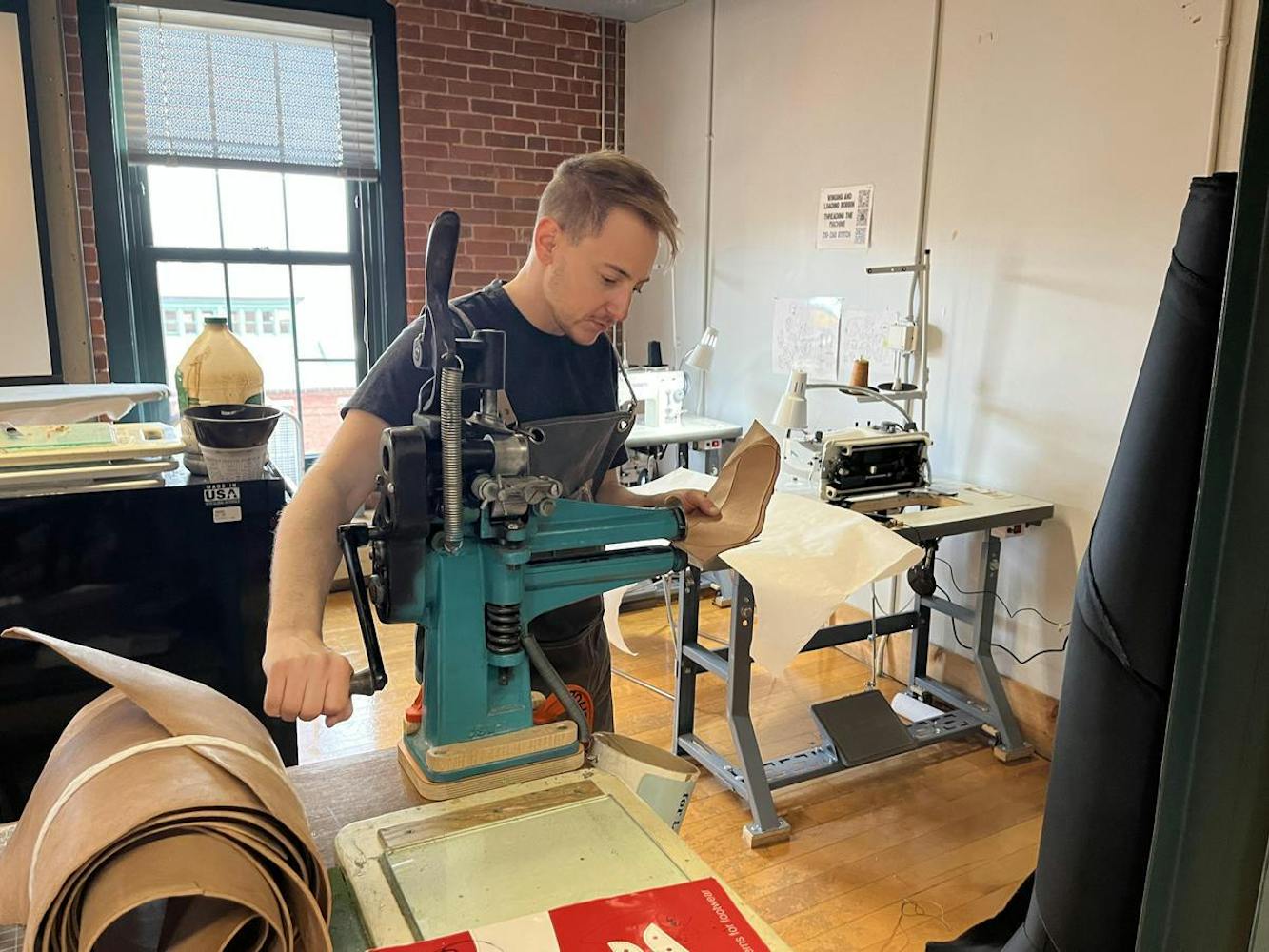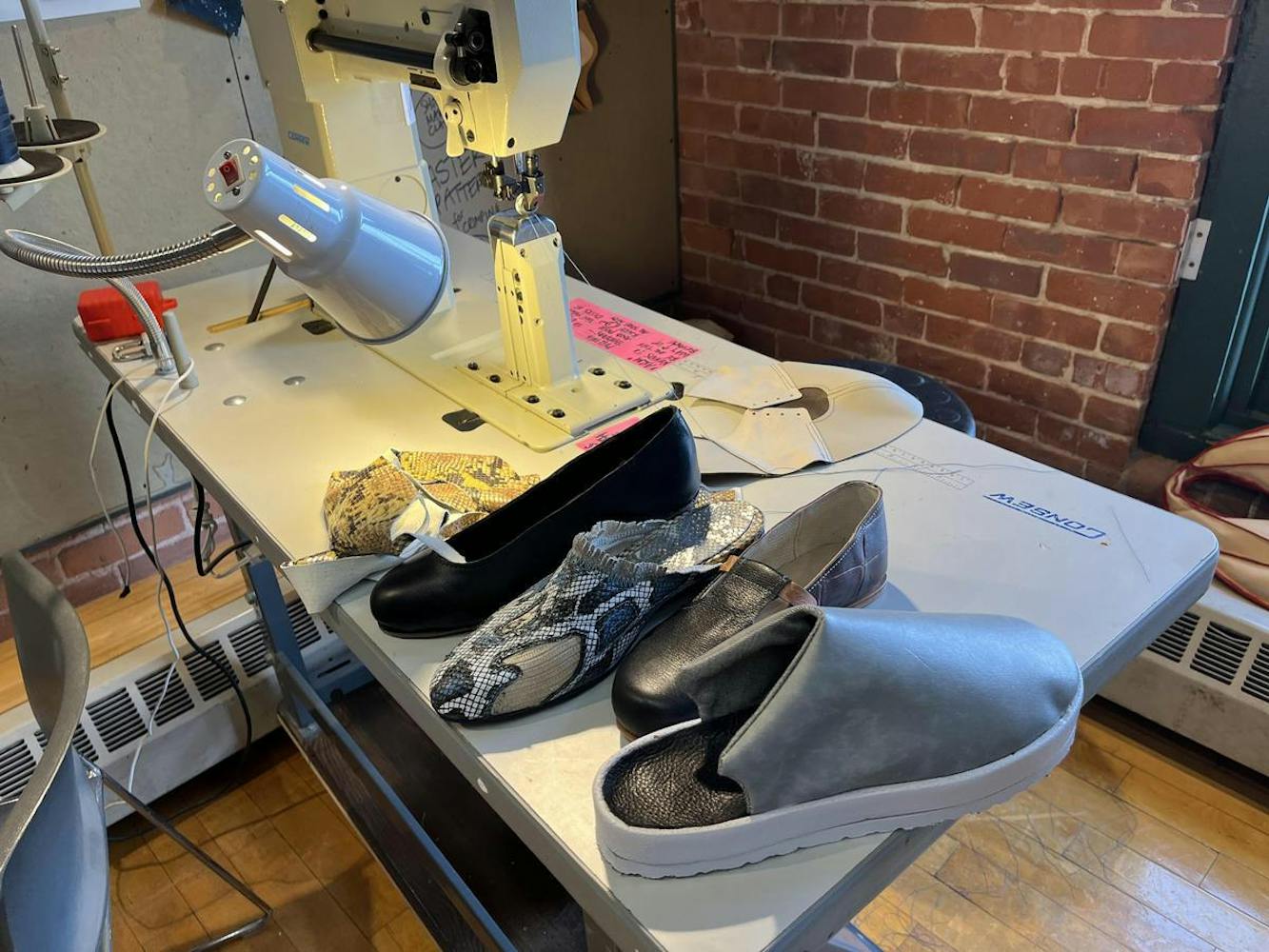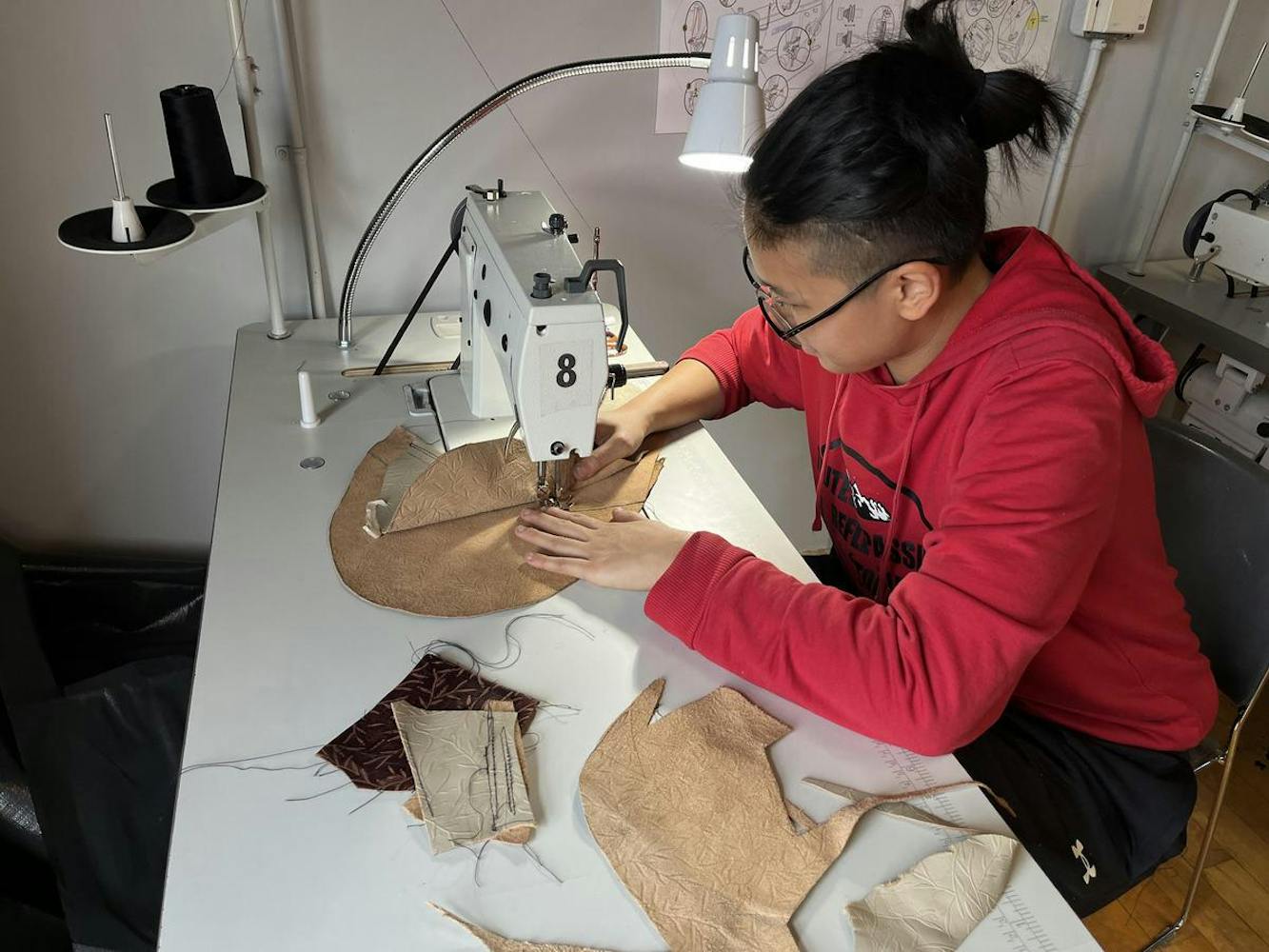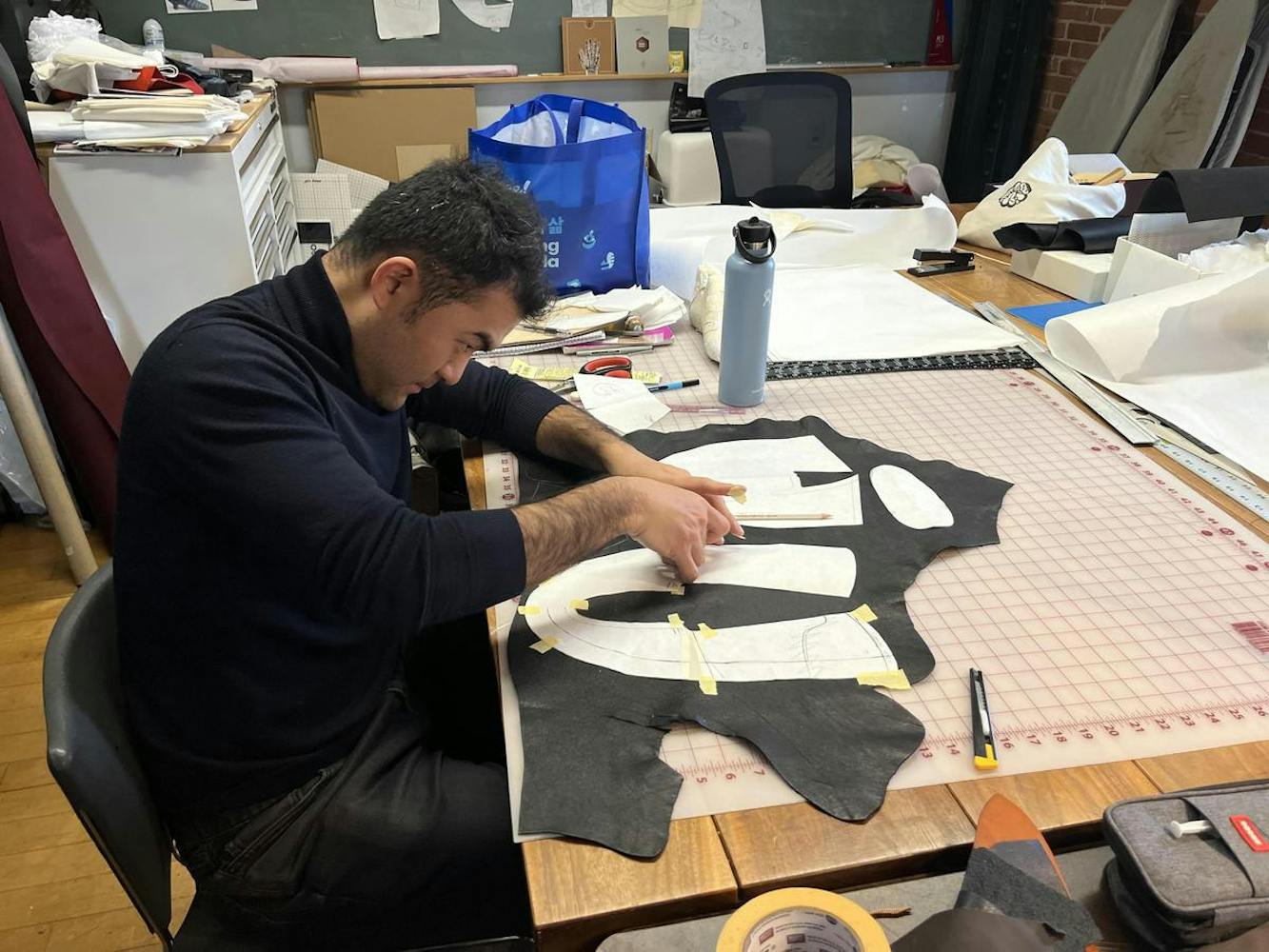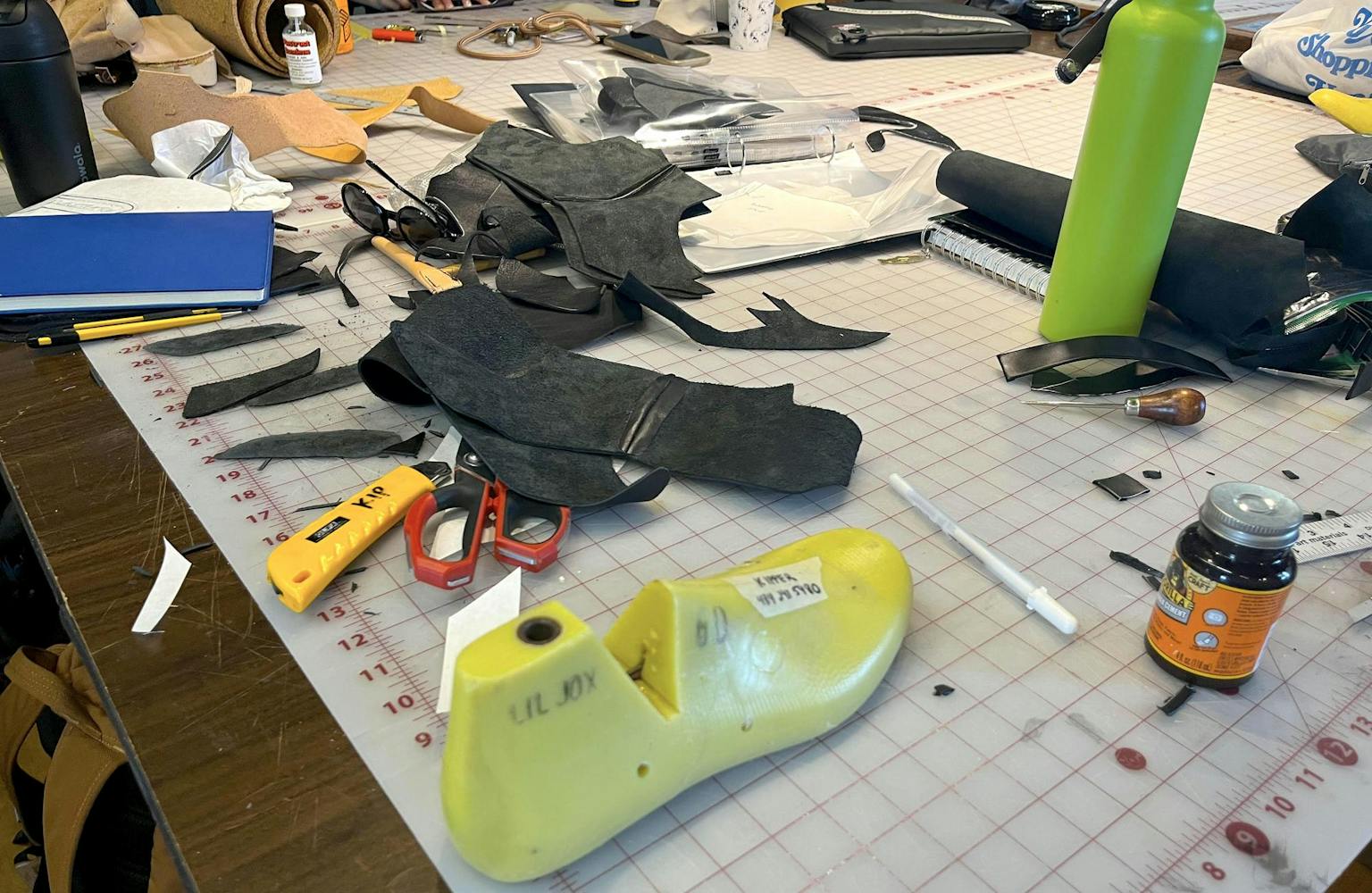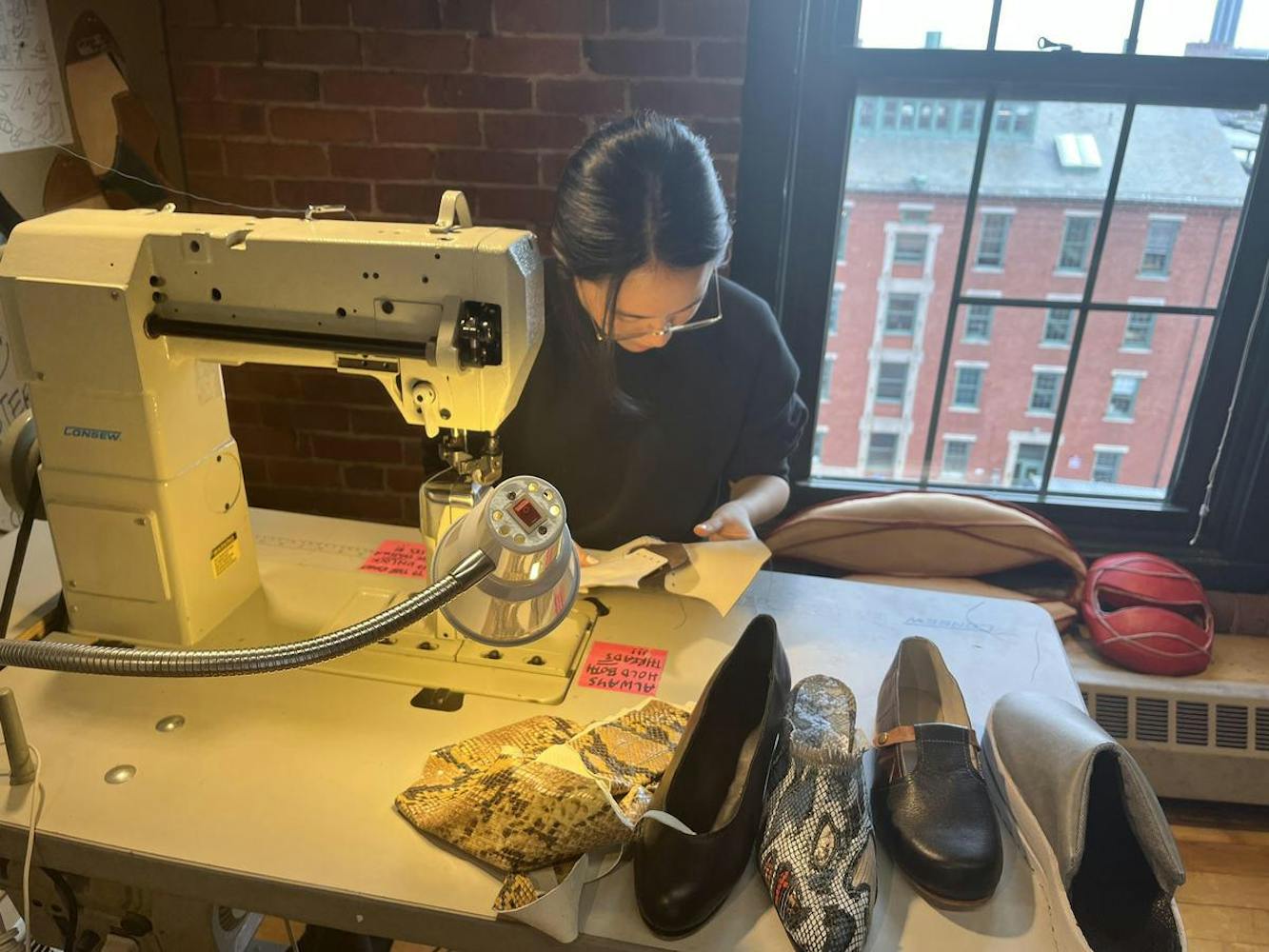On a snowy day roughly 12 years ago, shoemaker Anne Marika Verploegh Chassé’s train pulled into a city she had never heard of — Providence, Rhode Island.
Carrying a bag of shoe samples, Chassé walked up to the Rhode Island School of Design Industrial Design building on South Main Street for the first time.
“I fell in love with the building right away,” Chassé said, recalling the light snow falling as she entered. “It was very romantic.”
Ever since that day, Chassé, a senior critic in industrial design at RISD, has taken the train from her home in New York to Providence every Thursday night to teach students the art of shoemaking. And every Friday from 8 a.m. to 1 p.m. — and then again from 1:10 p.m. to 6:10 p.m. — she has transformed a small room on the sixth floor of the ID building into a shoemaking studio.
Chassé and her students shared with The Herald that this workshop isn’t just about producing footwear but also empowering a new generation of artisans and craftspeople.
An unlikely fit
Chassé stumbled upon the craft of shoemaking when she moved from Switzerland to New York in 1999. Chassé was working as a painter and illustrator when she came across a flyer about a shoemaking “hobby class.”
“I always loved making things,” Chassé said. But quickly she realized that shoemaking was something special. “I immediately fell in love with the physicality of it.”
After that class, Chassé embarked on a mission, traveling across Europe to study under shoemakers and bootmakers.
In Europe, Chassé explained, each shoemaker specializes in a single part of the overall process. But she wanted to learn everything.
“Honestly, my teachers in London were laughing a little bit … they were like, ‘That’s basically impossible,’” Chassé said. “But now they’re actually very supportive.”
Chassé still cannot believe that shoemaking has become her career. “Not in my wildest dreams would I have thought I would” be doing this, she said. “I can really pay my rent and all that (by) making shoes and boots for individual clients and also teaching.”
Chassé has made shoes for two Broadway productions, including over 250 pointe shoes for “The Phantom of the Opera.”
And if imagining a career as a professional shoemaker was difficult for Chassé, teaching others the craft seemed even more impossible. But during a meeting of “The Honourable Cordwainers’ Company” — a nonprofit dedicated to the historic preservation and research of shoemaking — Chassé happened to sit next to two RISD professors.
“We hit it off,” she said. The professors asked her if she would be interested in coming to Providence to talk about handmade shoes.
“I was like, ‘Oh my God, someone is interested in what I’m doing,’” Chassé said. “I literally went with my bags of tools and some shoe samples … (and) the students were really into it.”
Not long after, RISD offered Chassé a teaching position. Now, she also holds part-time faculty positions at the Fashion Institute of Technology and Parsons School of Design.
“It’s a very challenging class because we don’t really have a metal shop or wood shop with all the equipment,” she said. “It’s literally one specialized sewing machine and hand tools.”
Though initially Chassé carried the contents of her workspace back and forth to every class — lugging a forty-pound bag on the train — she has now nearly moved all her supplies to a small studio in the ID building.
A ‘hands-on’ craft
Lola Simon ’24, one of the students in Chassé’s class, held up her first shoe: a mule. To the slip-on shoe with a small heel, Simon has added a pink-ish star in the middle and a pink ribbon that gets crisscrossed up the wearer’s ankle.
“It’s like Cinderella,” she said, smiling.
Simon sought out Chassé’s shoemaking class after studying abroad in Kyoto, Japan in the spring. During her time abroad, she came to appreciate the unique nature of crafts and artisans.
“I got to know a lot of artisans and started to see craft as art,” Simon said. Currently pursuing a degree in visual arts at Brown, Simon’s work focuses on printmaking and installation. “Craft is not usually put in the same category as fine art. … It is often taken for granted.”
But according to Chassé, there has been a return to craftsmaking in recent years as part of a Makers Movement, “people wanting to do something with their hands again, something tangible, not just drawing.”
“In the old times, we knew everything we had to do to make our own shoes, we had to make our own tools, our own furniture (and) our own clothes — and that kind of got lost,” Chassé said. “Now we’re rediscovering these crafts.”
For Chassé, heritage crafts create a chance for people to do more with their hands. “People are disillusioned about not using their hands,” she said. “You’re sitting there for a five-hour class at your table, and it’s all on your laptop.”
But shoemaking is different.
“When students come in and they work for five hours and they’re hammering … you can tell by the minute they’re getting happier because they’re using their hands,” Chassé said.
The opportunity to work with her hands was what brought Aishwarya Dayama, a RISD Master’s student studying adaptive reuse, to the class.
“I wanted something hands-on,” Dayama said. “I wanted to do something radically different” from studio-based classes.
Dayama explained the complicated process of making a shoe — from fitting, designing, prototyping and then making a final product. She said the length of the process and the precision required surprised her.
“Even your previous smallest mistakes can (impact) your final thing,” Dayama said.
Mia Prausnitz-Weinbaum ’24 was also surprised by the amount of detail required to make the shoes.
“A lot of what I do on my own is very self-taught. I just kinda go for it and hope for the best,” Prausnitz-Weinbaum said of her artistic practice. But shoemaking requires more careful planning. “Because the leather is so expensive and from an animal, you want to be more intentional.”
“In a world of mass-produced items, making stuff for yourself is really cool,” she added.
Handcrafting products invites “a completely different way of looking at objects and what you surround yourself with and what makes you happy rather than mass production,” Chassé said. “It’s something special. … You’re becoming part of the story.”
The students’ first project — making a single simple shoe — took several weeks as they learned the basic skills and techniques of shoemaking. For their final project, students are encouraged to apply what they have learned to make any pair of shoes — whether it be comfortable high heels and Mary Janes or knee-high boots.
Though the semester is not yet over, Chassé’s students are already dreaming of how they will use their new skills after the class ends.
“I can’t stop talking about shoemaking,” Simon said. “It changed my life.”

